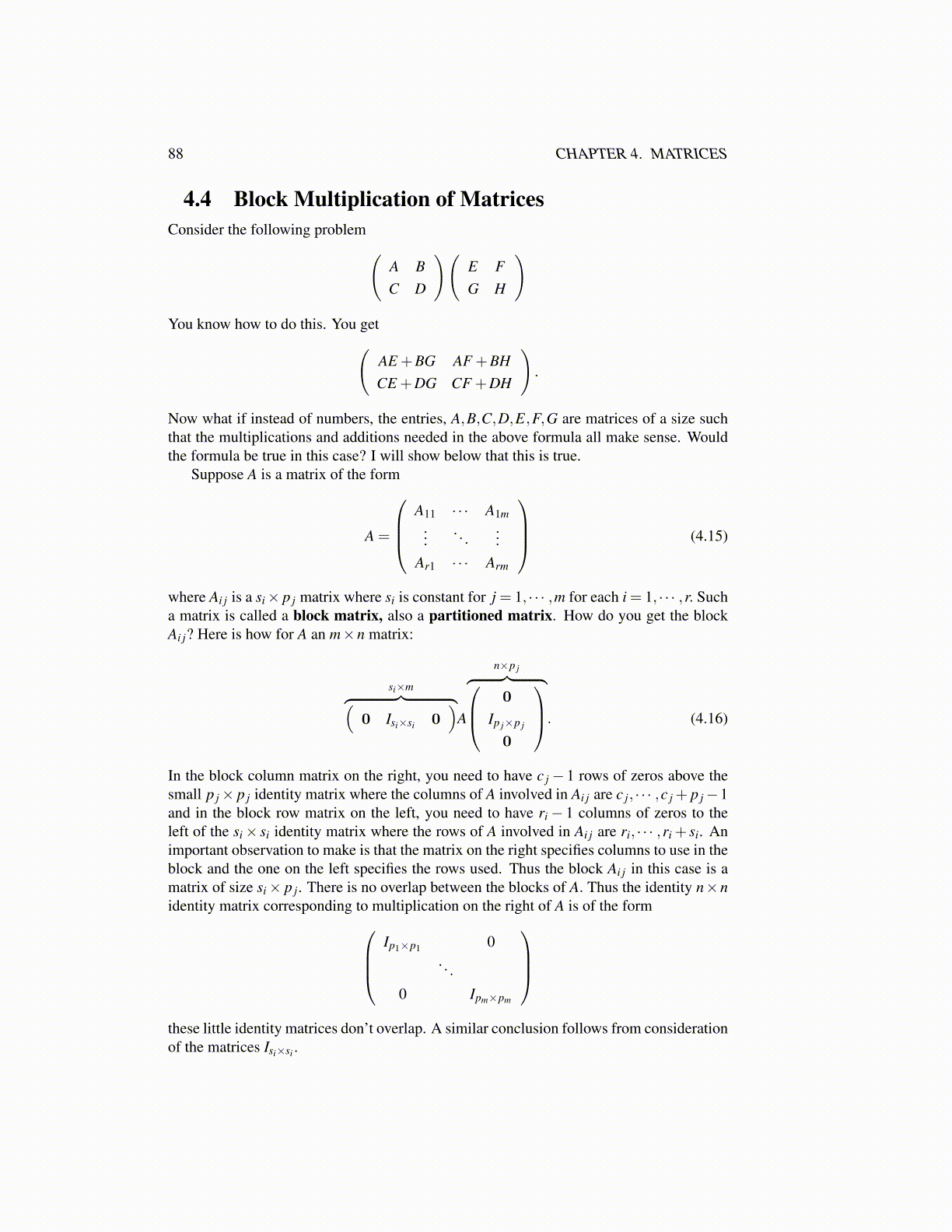
88 CHAPTER 4. MATRICES
4.4 Block Multiplication of MatricesConsider the following problem(
A BC D
)(E FG H
)
You know how to do this. You get(AE +BG AF +BHCE +DG CF +DH
).
Now what if instead of numbers, the entries, A,B,C,D,E,F,G are matrices of a size suchthat the multiplications and additions needed in the above formula all make sense. Wouldthe formula be true in this case? I will show below that this is true.
Suppose A is a matrix of the form
A =
A11 · · · A1m
.... . .
...Ar1 · · · Arm
(4.15)
where Ai j is a si× p j matrix where si is constant for j = 1, · · · ,m for each i = 1, · · · ,r. Sucha matrix is called a block matrix, also a partitioned matrix. How do you get the blockAi j? Here is how for A an m×n matrix:
si×m︷ ︸︸ ︷(0 Isi×si 0
)A
n×p j︷ ︸︸ ︷ 0
Ip j×p j
0
. (4.16)
In the block column matrix on the right, you need to have c j− 1 rows of zeros above thesmall p j× p j identity matrix where the columns of A involved in Ai j are c j, · · · ,c j + p j−1and in the block row matrix on the left, you need to have ri− 1 columns of zeros to theleft of the si× si identity matrix where the rows of A involved in Ai j are ri, · · · ,ri + si. Animportant observation to make is that the matrix on the right specifies columns to use in theblock and the one on the left specifies the rows used. Thus the block Ai j in this case is amatrix of size si× p j. There is no overlap between the blocks of A. Thus the identity n×nidentity matrix corresponding to multiplication on the right of A is of the form
Ip1×p1 0. . .
0 Ipm×pm
these little identity matrices don’t overlap. A similar conclusion follows from considerationof the matrices Isi×si .